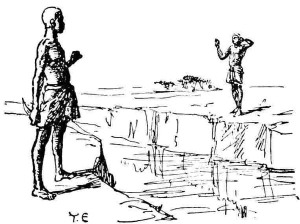As I mentioned in one of my
previous blog posts, I took this class because I wanted to re-enhance my knowledge in topics that I had learned in the past but not fully retained. With that being said, here are some ideas for my storybook project this semester.
1. The Story of Perseus, told from those around him
I've always been intrigued by Perseus and his role in Greek mythology. He is the protagonist in
stories throughout Greek mythology, and there's no denying the impact of his character in pop culture (Percy Jackson,
Clash of the Titans, etc.) However, I find it interesting no one has really explored the story from other points of view. There are several different viewpoints in this story: Andromeda (the woman he saves from the sea monster), the gorgons (who were killed by Perseus), and even that of his father, Zeus. I think I could dive into the gorgons' history before Perseus and perhaps even extrapolate his story after he saves Andromeda.
2. My twist on Aesop's Fables
I've always been a big fan of Aesop's Fables. My parents introduced them to me when I was a child, and I quickly enjoyed how simple the stories are yet how deep and applicable the message can be. "
The Hare and the Tortoise" taught me to be patient and methodical with anything I do to produce better results. One of my dad's favorite sayings comes from "
The Lioness and the Vixen": quality, not quantity. Furthermore, I've always wondered if I could write similar stories with a similar message. This class gives me the opportunity to do just that. It would also be an interesting challenge because I'm obviously not quite as creative or as good at storytelling as Aesop.
3. Dante's Inferno, reimagined
I read some of Dante's Inferno in high school, and I was immediately hooked by it. I was particularly interested in how Dante categorizes and ranks the
nine circles of hell. But what if the layers were different? This would also be quite the challenge for me because I would have to be a little more introspective as to how I would categorize them. Recreating the first nine circles might be a little complicated, but I think that I could find a unique way to rearrange the first three levels.
4. Homer's Odyssey
It would probably be impossible for me to confine all of the Odyssey to one storybook. However, I think I'd enjoy focusing on one aspect of the story, such as Odysseus'
clash with the Cyclops or
Circe's island. Just like Dante's Inferno, I read some of the Odyssey in high school but fell out of touch with it once I got to college. I could also tell the story from the perspective of the protagonist's enemy.
Overall, I think these four ideas highlight the parts of this class I am most interested in, and I would be very eager to work on any of these subjects.















